Introduction
This project was completed over ten weeks as part of an undergraduate course on User-Centered Design at the University of Washington in the Winter of 2023.
We selected individuals geographically separated from the children they care for as our user group. In a world now familiar with geographic separation after enduring the pandemic, our team sought to explore how technical tools do or do not meet the connection levels we all need.
Our research determined existing services cannot provide the connection or felt-sense of presence needed to sustain long-distance relationships, specifically in relationships between adults and children. In the process, we discovered that there had been much research advocating the absence of authentic interactions within online platforms, and yet little has improved. To tackle this challenge, we went through the following research, define, ideate, prototype, and testing phases to create a solution for our user group.
Timeline

Our Vision Statement
We believe that individuals physically separated from loved ones are most frustrated about communication through tech which is different from the familiarity of in-person interactions due to a lack of feeling in context.
Meet the Team
René Capella: renecapella.com
Esther Cui: esthercui.com
Casey Kelly: thecaseymkelly.com
Hiromu Sugiyama
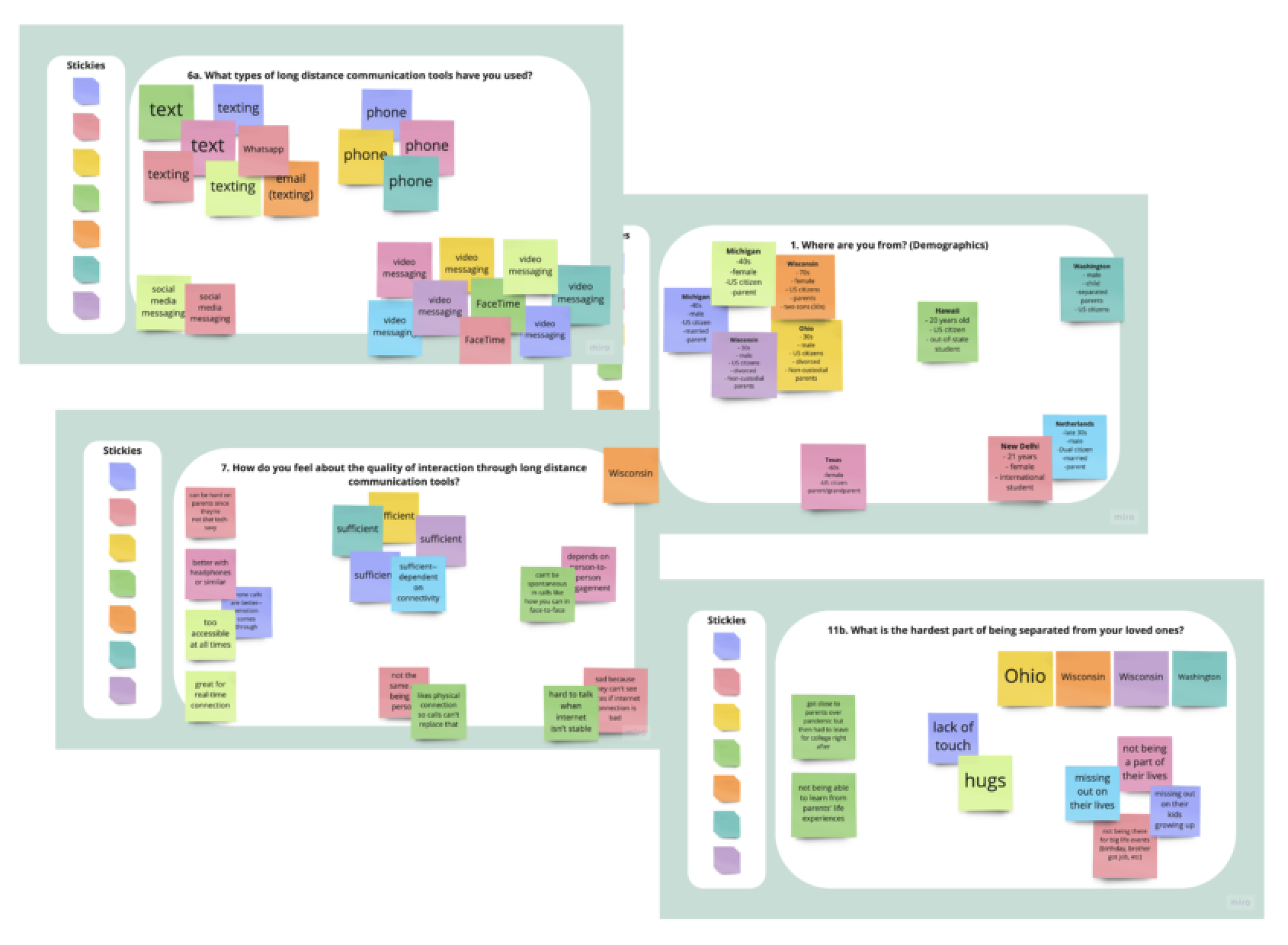
Research
Our research consisted of 14 unstructured interviews with individuals currently or previously physically separated from a loved one. We synthesized the data by coding the transcripts of each interview. We ultimately pulled from 8 of the 14 interviews to create our user personas.
Define
In our define stage, we have collected information and have developed a better understanding of our users based on our research. Focusing on our user personas and journey mapping to brainstorm more realistic experiences and possible concrete solutions.
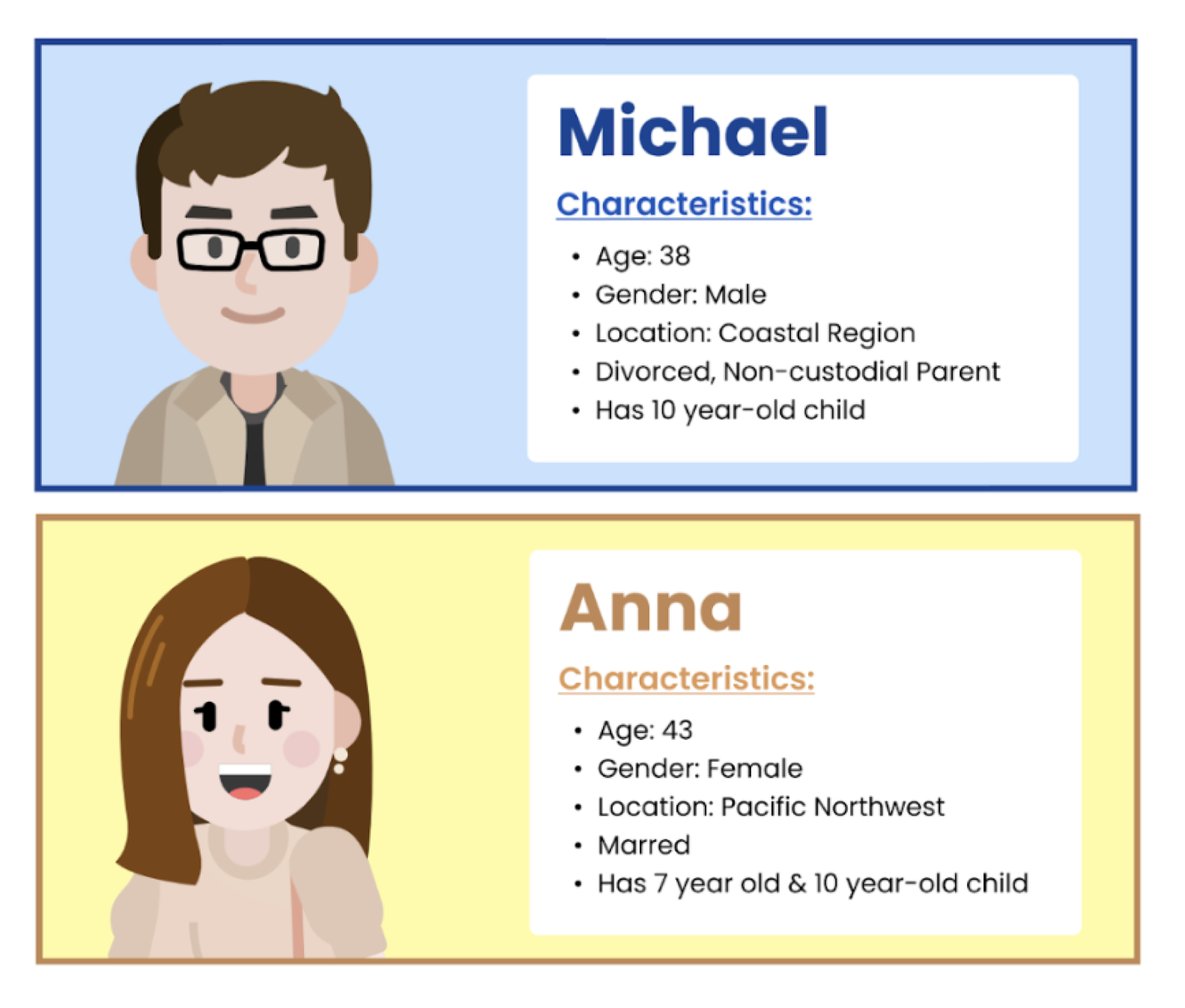
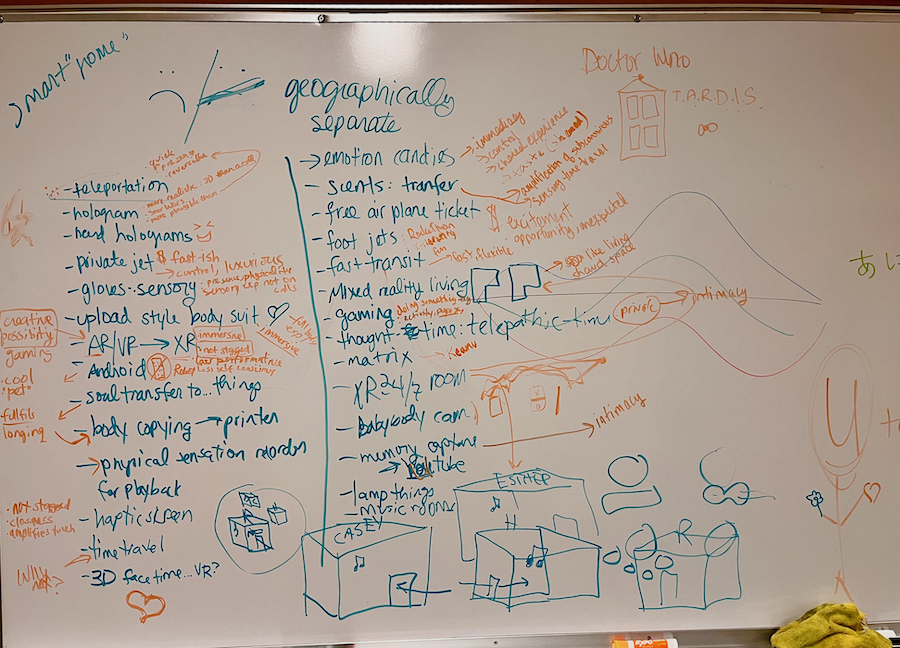
Ideate
Ideation is where we begin to develop different solution possibilities based on our previous stage and problem statement. A great deal of drafting and sketching was also an integral part of this section as we begin to integrate our individual ideas.
Prototype
There are several sections involved in the prototyping process as we iterate upon various design ideas and decide on our final plans. In this section, we focused on user interaction and prioritizing how are goals and requirement would fit into our design. First starting with the low fidelity prototype, we then progressed into crafting our high fidelity interaction flows before going into user testing.
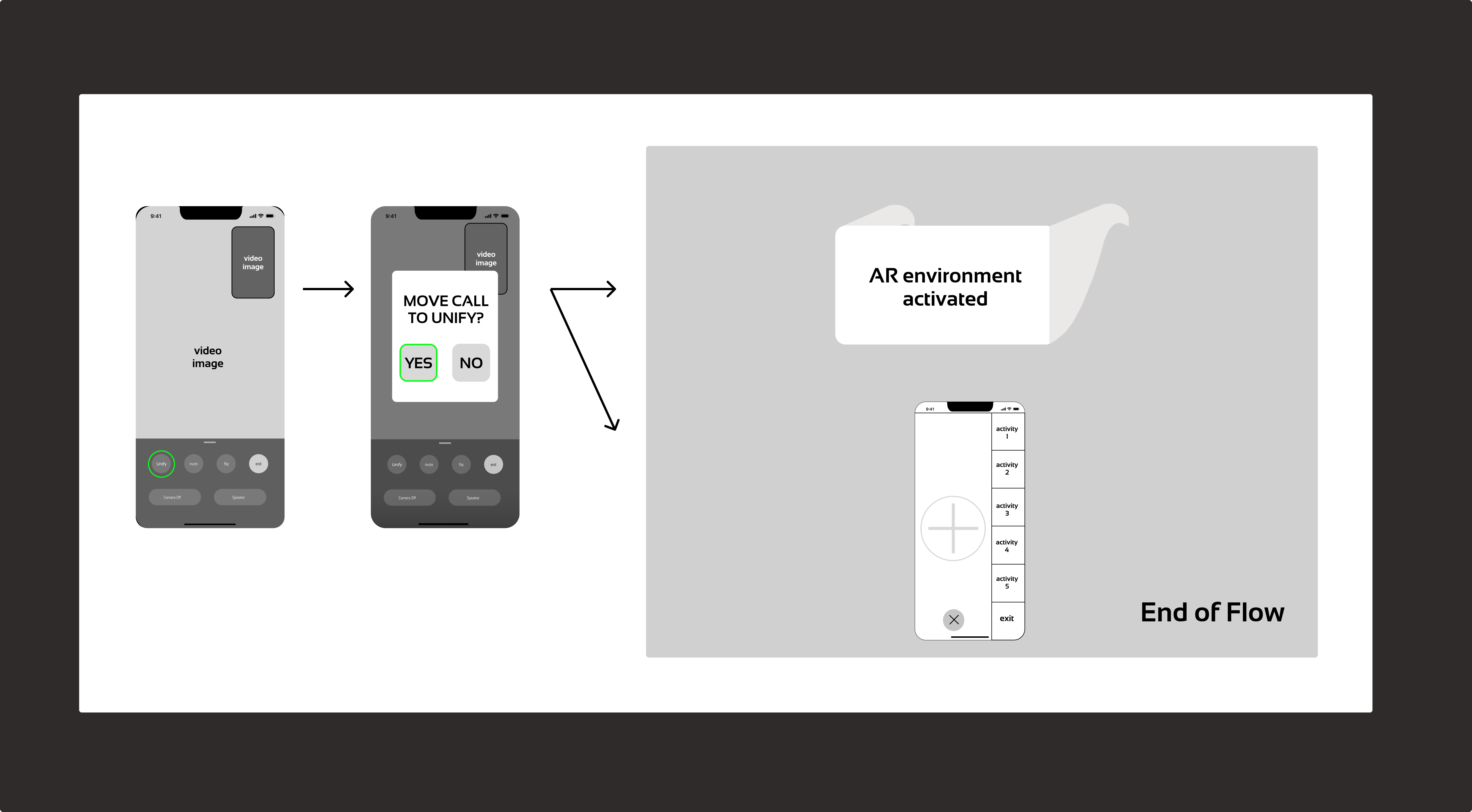
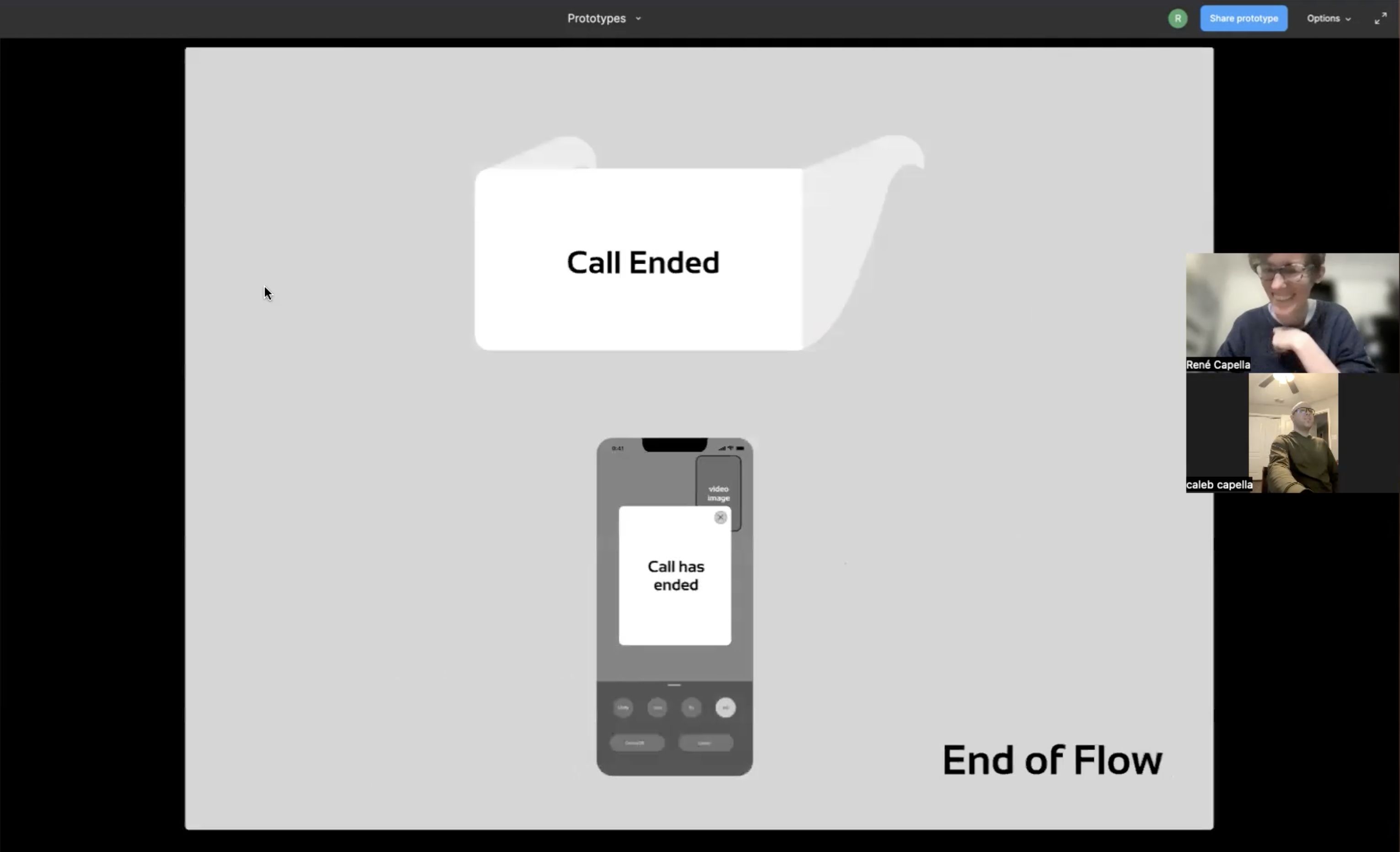
Test
Testing is the last main step in our design process where we focused on user feedback from testing our prototypes and creating solutions based on their suggestions. From there, we worked on improving our previous designs as well as gaining a better understanding of how users interact with our product.
Reflection
Throughout our design process and the course content, there are a multitude of skills and valuable learnings that we have gained through this experience. As a team, it was important for us to understand how to navigate and collaborate with each other. Organization and communication were some of the most important factors that allowed us to step into our creative spaces and convey our ideas. By taking the time to understand each other’s ideas and perspectives, we were able to equally invest in our product and design.
As individual designers, we each had several areas in which we advanced or built upon our previous design experiences. One skill that we as a team all felt was crucial to our experience was our sketches, which we continued to iterate upon throughout the entire process. Additionally, emphasizing the initial phases of our design assisted in our later ideation steps, such as our analyses and focusing on our set user group.
Upon further reflection, however, there were a couple of limitations that influenced our end product and experience. Given that our project was to be completed within 10 weeks, it was challenging for us to explore more ideas, especially relating to prototyping and other design possibilities. Time ultimately had a great impact on how we conducted different steps in our process, namely competitive analyses and observations, product research, and prototype testing.
In addition to the various resources and assistance that we received in the class, our group and individual accomplishments are reflected through our work as Team Unify. Looking back at the last ten weeks, this project has provided us with an irreplaceable experience and opportunity to be able to immerse ourselves in user experience design.
